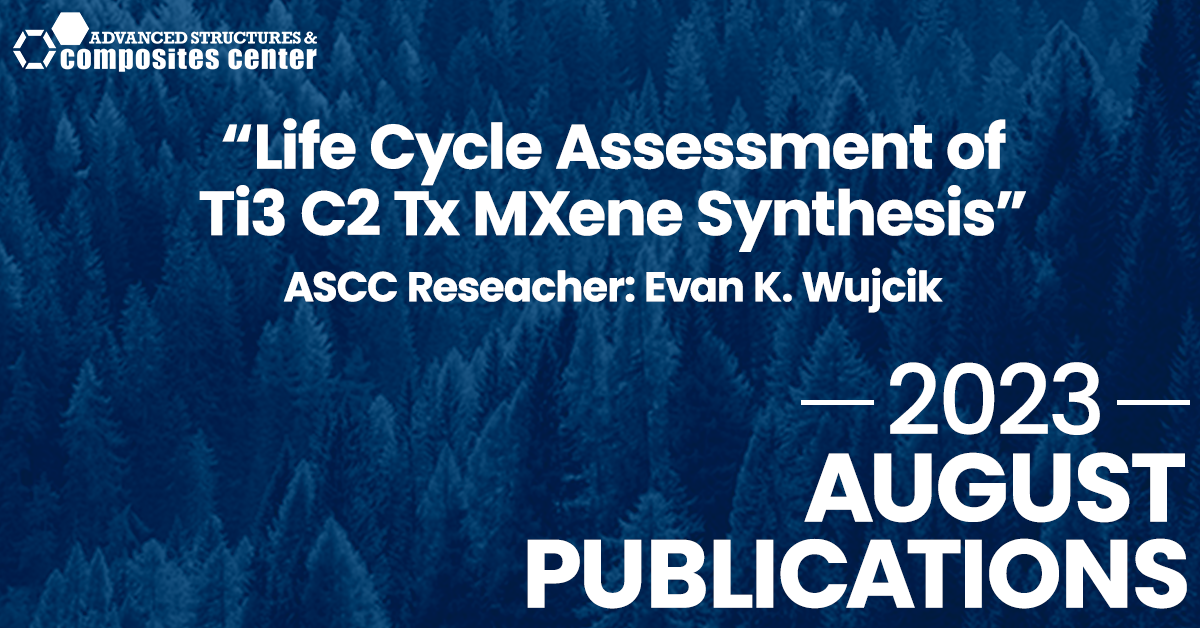
Article by ASCC researcher Evan Wujcik, Purdue University, University of Alabama & University of Alberta researchers published on MXene Production Environmental Impact
An article by UMaine Advanced Structures & Composites Center (ASCC) Researcher & Assistant Professor of Chemical Engineering Evan K. Wujcik, along with Purdue University & Integrated Nanosystems Development Institute (INDI) researchers Kartik S. Nemani and Babak Anasori, University of Alabama (UA) & INDI researcher Mostafa Dadashi Firouzjaei, UA Elliot Water Research Group researcher Mark Elliot, and Donadeo Innovation Center for Engineering (ICE) & Advanced Water Research Lab (AWRL) at the University of Alberta researcher Mohtada Sadrzadeh, has been published in Advanced Materials. The article titled “Life-Cycle Assessment of Ti3 C2 Tx MXene Synthesis”, offers an assessment of MXene Synthesis, which suggests that “recycled resources and renewable energy can make MXene synthesis more sustainable.
This article dives into the impact of the production of a material called MXene, which has promising uses for shielding unwanted technological signals, has on the environment. The study found that the biggest negative impact on the production of MXene is the amount of electricity used rather than the chemicals. Therefore, using a renewable energy source such as wind or solar energy in the production of MXenes could be better for the environment than using copper or aluminum.
Life-Cycle Assessment of Ti3 C2 Tx MXene Synthesis
Mostafa Dadashi Firouzjaei, Srinivasa Kartik Nemani, Mohtada Sadrzadeh, Evan K. Wujcik, Mark Elliott, and Babak Anasori
Advanced Materials (2023)
https://doi.org/10.1002/adma.202300422
